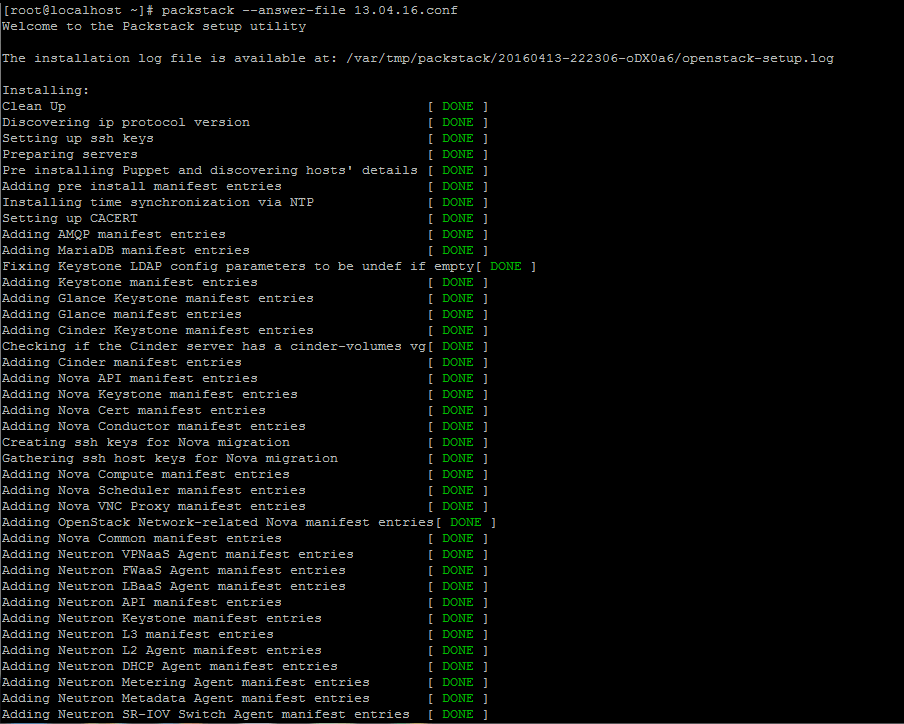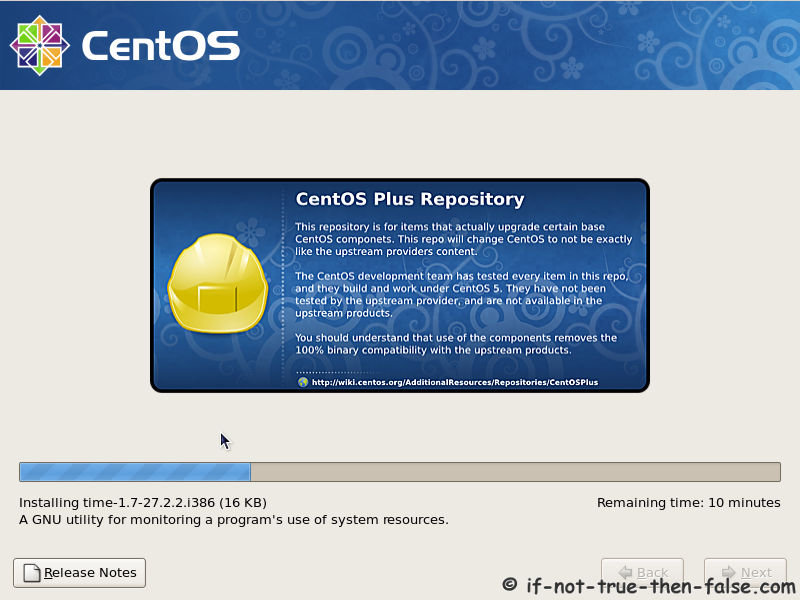Install Packages Centos
And, there you have it, a more significant number of packages to install from EPEL repo on CentOS Enterprise Linux version 8.x. See EPEL repo home page here for more information. This entry is 5 of 5 in the Enable EPEL Repository on a CentOS/RHEL Tutorial series. Installing and managing software on a Linux server running CentOS as an operating system is fairly easy. You can accomplish this by using a package manager called yum. First of all, connect to your CentOS VPS via SSH and check whether some of the installed packages on your system have available. Updating Packages on CentOS. RPM is a packaging system used by Red Hat and its derivatives such as CentOS. Yum is the default package manager tool in CentOS. It is used to install, remove, download, query and update packages from the official CentOS repositories as well as other third-party repositories.
Every Linux distribution has a way to manage software packages. Besides installing software by compiling it from the source, CentOS uses two package management commands: a low-level RPM and a high-level YUM command.If you ever wondered what YUM stands for, it is an abbreviation for Yellow Dog Updater, Modified. It is a high-level package manager that uses the RPM package management tool in the background. So, how it differs from RPM? I will show you in a minute.
Installing Packages using YUM on CentOSFor the sake of illustration, let’s install a package called httpd, which is an Apache web server. We will use yum install httpd as follows: yum install httpdOnce you issue that command, a lot of text goes by and you are prompted to press ‘y’ to proceed.Accepting installationBefore you do, take a look at the above text: you can see the package name, it’s architecture, version, repository, and size. Also, you can see that it is installing five other packages as dependencies, totaling 6 installed packages. RPM vs YUM: When you install a package via RPM, you may have to need some other packages.
Download software alkitab elektronik untuk pc windows 7. These are called dependencies. It can sometimes lead to dependency hell, because for example packagea have dependency called packageb, and packageb, in turn, have packagec as the dependency. Packagec can have, you guessed, packaged as dependency and so on.So we need to download not only packagea but also packageb, packagec and so on. Some package may require as many as 100 dependencies. An additional problem is that we need to install the exact version of the dependency package, that matches the man package. YUM takes care of all of that.Press y, and once again, and it is finished.Installation finishedA helpful tip: if you are sure what you are doing then you can automatically accept everything by using -y switch to yum command.
For example: yum -y install httpd RepositoriesRepositories are locations on the internet where all the packages are stored. These are obviously configured somewhere. In CentOS, repositories are stored as files in /etc/yum.repos.d folder. We can take a look at its contents. /etc/yum.repos.d/CentOS-Base.repo CentOS-Debuginfo.repo CentOS-fasttrack.repo CentOS-Media.repo CentOS-Vault.repoAll there repositories(or “ repos”), defined with files ending with. Repo are already configured when we install minimal CentOS.In CentOS 6, we don’t need to manage packages with yum to download an rpm package, because it is available in the default repositories.

So let’s try to install it via yum. Yum -y install epel-releaseNow let’s see the contents of /etc/yum.repos.d/ again. Ls /etc/yum.repos.d/CentOS-Base.repo CentOS-Debuginfo.repo CentOS-fasttrack.repo CentOS-Media.repo CentOS-Vault.repo epel.repo epel-testing.repoWe can see new files epel.repo and epel-testing.repo. They define repository with hundreds of additional packages for CentOS, RedHat, Scientific Linux and few other clones of RedHat. There is even a way to show all repos and a number of packages they contain with one yum command, yum repolist.

Yum repolistLoaded plugins: fastestmirrorLoading mirror speeds from cached hostfile. base: centos.t-2.net. epel: mirrors.netix.net. extras: centos.t-2.net.
updates: centos.t-2.netrepo id repo name statusbase CentOS-6 - Base 6,713epel Extra Packages for Enterprise Linux 6 - x8664 12,506extras CentOS-6 - Extras 43updates CentOS-6 - Updates 319repolist: 19,581You can see here that epel repository contains amazing 12,514 packages. Listing installed packagesI showed you in my how to list installed packages, with rpm -qa.
You can also list these with yum, using list installed options. Yum list installedListing installed packagesIts output is a bit different than the one obtained by the rpm command. It’s up to you to decide which one to use. Removing PackagesRemoving the package is easy, just use erase option when using yum, followed by a package name.
Yum erase -y epel-releaseSimilar to RPM, you don’t have to specify the version of the package, just the name of the package.Let’s install it again because we will need it again in the article. Yum -y install epel-release Searching for PackagesYou can search for packages from the installed repositories using search options, followed by a pattern. It will search only package name and summary, but if there isn’t a match, it will search in the description and URL.
For example, to search for packages that have httpd in their name/summary/description/URL, you should type: yum search httpdA lot of packages show some of these don’t have httpd in the package name. Instead, you will see it in the description, for example, modauthmellon.Searching for httpd with yum. You may have noticed that the search is case insensitive, so you don’t have to worry whether you are looking for httpd, Httpd or HTTPD. Retrieve Package InformationBefore installation, we can get more information about a certain package by using yum search followed by the package name. Let’s try it with httpd package. Yum info httpdThis shows about every information: its name, architecture, exact version and release, size, and also such things such as from which repo it was installed.Output of yum searchIt will show only information about package exactly called httpd. Since it can produce multiple results, and we want information about all packages that start with httpd, we can use a wild character as well.
Yum info httpd. ConclusionAfter a long period where RPM was the prevailing way of installing software, yum is today the preferred way to install software on RedHat compatible Linux operating systems.YUM was always available, but versions that could be installed out-of-the-box were mostly deprecated. Today, software producers often offer newer versions using yum by means of installing repository via.rpm file. Therefore, for example, if you want to install the newest PHP package, we install a repository that offers that specific version of PHP. Yum is today more powerful than ever, and by getting to know it better, you can make your Linux management much easier.
It is possible to use yum and rpm to install any package in the repository of the distribution. Here is the recipe: Find the package nameUse yum search.
DownloadDownload the package and all of its dependencies using yumdownloader (which is available on CentOS by default). You'll need to pass it -resolve to get dependency resolution.
Yumdownloader downloads to the current directory unless you specify a -destdir. Mkdir -p /rpmyumdownloader -destdir /rpm -resolve vim-commonChoose a prefix locationIt might be , /centos, or /y. If your home is slow because it is on a network file system, you can put it in /var/tmp/. Mkdir /centosExtract all.rpm packagesExtract all.rpm packages to your chosen prefix location.
Cd /centos && rpm2cpio /rpm/x.rpm cpio -id. rpm2cpio outputs the.rpm file as a.cpio archive on stdout.
cpio reads it from from stdin.i means extract (to the current directory).d means create missing directoryYou can optionally use -v: verbose Configure the environmentYou will need to configure the environment variable PATH and LDLIBRARYPATH for the installed packages to work correctly. Here is the corresponding sample from my /.profile: export PATH='$HOME/centos/usr/sbin:$HOME/centos/usr/bin:$HOME/centos/bin:$PATH'L='/lib:/lib64:/usr/lib:/usr/lib64'export LDLIBRARYPATH='$L:$HOME/centos/usr/lib:$HOME/centos/usr/lib64'Note: When you ssh into a server, you get a login shell. So your.bashrc isn't sourced by default.
Bash runs your login startup file instead. This file is the first existing file in the list:.bashprofile,.bashlogin and.profile (see ). If for some obscure reason, you want to configure your environment in your.bashrc rather than your login or startup file, you'll have to source the former from latter.Now if you want to install a lot of packages that way, you might want to automate the process. If so, have a look at.
TL;DR Use Miniconda, conda-forge is amazing.I've tried for a long time to get a package manager to work well on CentOS but without success. The best I could do was to install a Gentoo Prefix at the correct location on another CentOS with root access, then scp a.tar.xz of the whole installation to the target server (only way to get a proper gcc for Gentoo Prefix). I could emerge (build & install) packages on the target server but kept hitting problems with locals and permissions.I recently achieved a user installation of some interesting packages using conda. Here is how to install it from the command line: curl ' shIf like me, your home folder is hosted on a remote drive (a network file system), you might not want to install it in your home folder, so you might want to use something like mkdir /var/tmp/lo then specify an installation folder like /var/tmp/lo/da during the installation.You'll also be prompted to add, say /var/tmp/lo/da/bin to your PATH in your.bashrc, but when you ssh into a server, you get a login shell, so your.bashrc isn't sourced by default.
So you'll need to use your.bashprofile/.bashlogin/.profile (see ) to add that line or to source your.bashrc.You'll then be able to install quite a lot of packages, though maybe not all those you wanted. Most of the time, if it is not in the default channel, it will be in conda-forge. You can check for existing packages at gcc conda install gcc. zlib conda install zlib. make conda install make. cmake conda install cmake. git conda install git.

fish conda install -c conda-forge fish. zsh conda install -c ActivisionGameScience zsh.
tmux conda install -c conda-forge tmux. This tmux has a bug with the name of the ncurse library it uses. You can work around it by going to your da/lib folder and symlinking ln -sT libtinfow.so.6.1 libtinfo.so.6Other package managers I've tried to use after conda: LinuxbrewI thought that with that it would be easy to install homebrew (linuxbrew) but their sources are messy and use hard-coded absolute path to ruby interpreter, which fails because it isn't the last version and so on and so on and I gave up. NixNix still requires you to use the /nix folder. They hard-coded it too and it's hard to sed it correctly from every download it has to do during the installation (let alone updates). Gentoo PrefixI expect Gentoo Prefix to be easier to install directly now that we gcc can be used on the target server.
Install Packages Centos
Ok, I tried but met permissions bugs during installation (2018-09-28): portage.exception.OperationNotPermitted: chown(b'/gentoo/tmp/var/tmp/portage/sys-apps/gentoo-functions-0.12/image/var', 2000, 2000)PkgSrcI'm going to try now. Use (older) version 64-bit EL 6.x if on CentOS 6 or if encountering (G)LibC version issues with the 7.x one. No luck, pkgsrc hard codes /usr/pkg/sbin and /usr/pkg/bin.
Yum Package List
So it can't be used as user, unless maybe setting up a fakechroot environment. But I've never done that and I expect usability issues.Please comment/answer if you succeed in installing any other package manager.